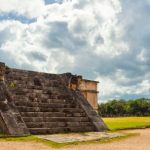Value generation from the exploitation of Intellectual Property
- 23 May 2017
- Articles
Often, organizations are unaware of their ability to generate valuable knowledge, losing the ability to differentiate from their competitors or to add value to their products and services, by protecting their Intellectual Property
” Intellectual capital is recognized as the most important asset of many of the world’s largest and most powerful companies”
Kelvin King, Founding Partner of Valuation Consulting
According to WIPO, Intellectual Property is related to creations of the mind: inventions, literary and artistic works, designs, as well as symbols, names and images used in commerce. The legislation provides different tools to protect the developments of organizations, including trademarks, patents, industrial designs, industrial secrets, plant varieties, appellations of origin, copyright, among others.
The first recommendation is always protecting. For this purpose, it is necessary to study with the experts, if there is a protection potential and what is the most adequate protection strategy, according to the needs of the organization. Among the advantages that organizations may have by protecting their Intellectual Property is to generate differentiation and competitive advantage, in addition to obtaining an economic return, thereby recognizing the importance of both economic investment and human capital and time, in the development of valuable knowledge.
However, what is meant by exploitation of Intellectual Property? It is everything related to the use, sale, marketing, advertising, technology transfer, licensing and other activities that may generate an economic return for the organization, based on Intellectual Property rights. On the other hand, by valuing these rights, it is possible to convert them into intangible assets of the companies, which also generates value.
There are notable cases of companies, universities, research centers and other organizations that have grown and generated value from the exploitation of their Intellectual Property, being a living proof of the possible benefits obtained by the protection and acquisition of these rights.
In contrast, there are also known cases where non-protection of Intellectual Property led to loss of knowledge, use of ideas that subsequently had commercial success, vital information leakage and use of trademarks that were not registered.
To conclude, the following is recommended:
Protect: between protecting and not protecting, the recommendation is always the first.
Beware of the rights of others: whereas some organizations do not protect their Intellectual Property rights, others do. When entering the market or offering a product or service, it is advisable to determine whether there are rights of third parties that may be infringed.
Generate Intellectual Property culture: all members of an organization must be aware of the importance of safeguarding valuable information and of detecting possible elements that can be protected.
Seek advice: for all of the above, look for experts to guide you through the process, before it is too late.
Connect to our music






